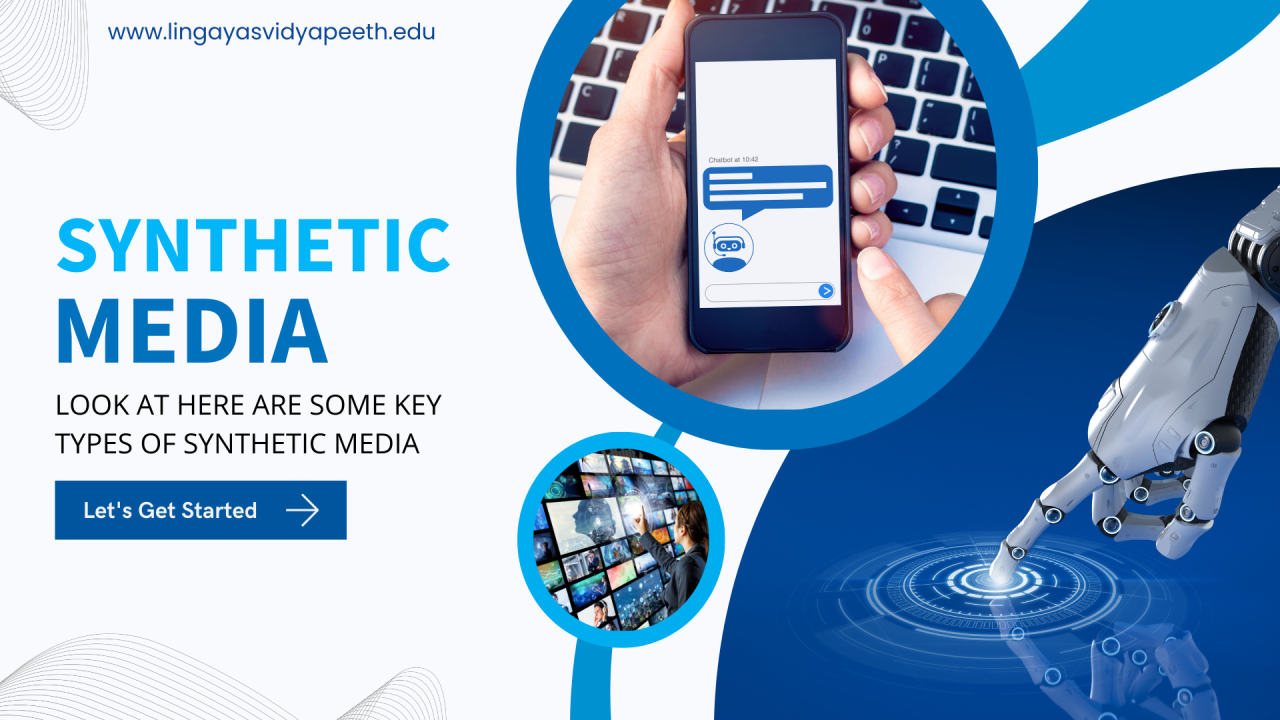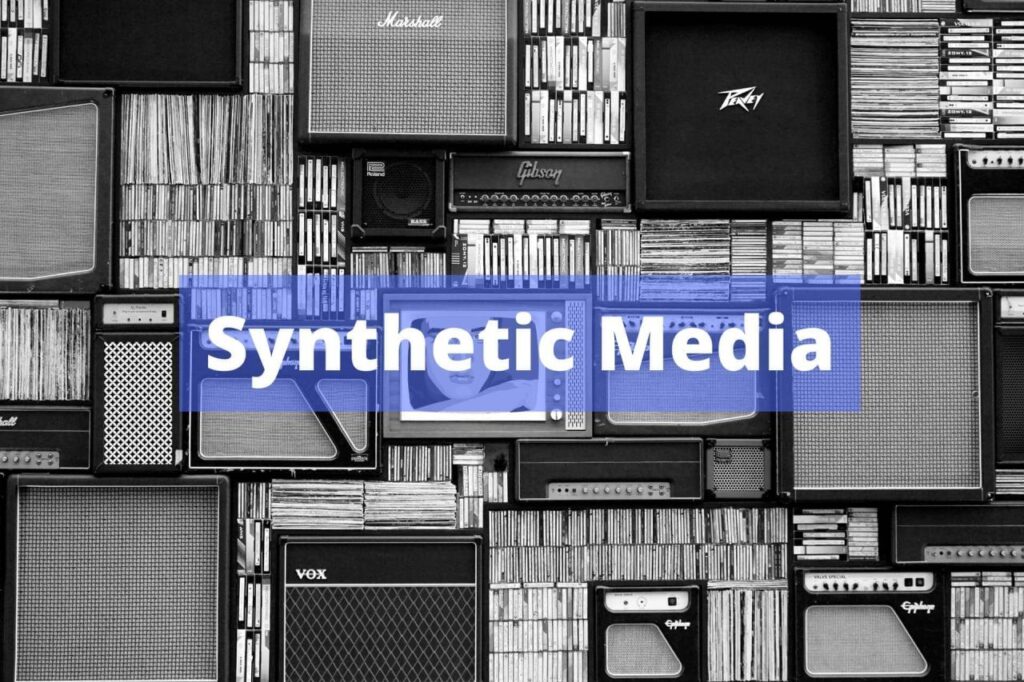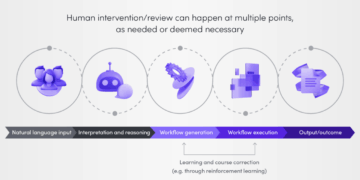Synthetic media, once a concept confined to science fiction, is now a rapidly expanding technological reality. From AI-generated videos and voice clones to deepfakes and virtual influencers, synthetic media is reshaping content creation, communication, entertainment, journalism, and even politics. Powered by advances in artificial intelligence, particularly deep learning and generative models like GANs (Generative Adversarial Networks) and diffusion models, this transformative medium is ushering in a new digital era.
But with this progress comes a dual-edged sword. While synthetic media offers unprecedented creative potential and accessibility, it also raises serious concerns regarding misinformation, copyright, ethics, and identity manipulation. In this comprehensive article, we explore the evolving landscape of synthetic media trends, their technological foundations, use cases, industry impact, future predictions, and the regulatory frameworks striving to keep pace.
What Is Synthetic Media?
Synthetic media refers to any content—images, video, audio, or text—that is generated or altered using artificial intelligence. It contrasts with traditionally created media because it does not originate solely from human creativity or direct physical input, but rather from computational processes trained on massive data sets.
Examples of Synthetic Media:
A. AI-generated voices that mimic celebrities or public figures
B. Deepfake videos blending real footage with altered appearances
C. AI-written news articles or stories
D. Virtual influencers like Lil Miquela
E. Synthetic humans in video games or films
Core Technologies Behind Synthetic Media
At the heart of synthetic media are various AI and machine learning techniques. These are responsible for generating realistic, high-quality, and often indistinguishable media content.
A. Generative Adversarial Networks (GANs)
GANs consist of two neural networks (generator and discriminator) that compete to improve the realism of generated content. Popularized by deepfake videos and AI art, GANs are a cornerstone of synthetic visuals.
B. Diffusion Models
Used in tools like DALL·E and Midjourney, diffusion models start with noise and gradually “denoise” it into a coherent image or video, allowing more controlled and detailed synthetic outputs.
C. Text-to-Speech (TTS) and Voice Cloning
AI models like Tacotron and WaveNet generate ultra-realistic speech, enabling synthetic voices that can mimic anyone with just a few seconds of recorded audio.
D. Natural Language Generation (NLG)
Language models like GPT (Generative Pre-trained Transformer) and Claude can produce coherent articles, scripts, poetry, or dialogue from a prompt, enabling AI writers and news bots.
E. Motion Capture & Avatar Animation
AI-driven avatars and digital humans, powered by body tracking and facial recognition, are being used in metaverse applications and virtual broadcasting.
Applications of Synthetic Media Across Industries

Synthetic media is rapidly being adopted across various sectors. Here’s how it’s transforming multiple industries:
1. Entertainment and Gaming
A. AI-generated characters with dynamic personalities
B. Deepfake actors for de-aging or resurrecting performers
C. Entire movies or scenes created without cameras
D. Synthetic background music and voiceovers for games
E. Real-time avatar-based livestreams
2. Marketing and Advertising
Brands are increasingly using synthetic media to create hyper-targeted, cost-effective campaigns.
A. Personalized ads featuring local dialects or customer names
B. Virtual brand ambassadors that never age
C. AI-generated explainer videos and testimonials
D. Deepfake endorsements (ethically questionable but emerging)
3. News and Journalism
A. Automated video news segments from text inputs
B. AI-generated summaries or real-time story updates
C. Synthetic anchors delivering the news in multiple languages
D. Potential risk: fake news deepfakes that are indistinguishable from reality
4. Education and Training
A. Digital tutors that adapt to a student’s learning style
B. Training simulations with realistic AI-generated scenarios
C. Language learning with conversational AI avatars
D. Synthetic professors delivering lectures in multiple accents
5. Social Media and Influencer Culture
A. Virtual influencers managed by brands or agencies
B. AI-generated content optimized for engagement
C. Fully synthetic podcast hosts or YouTubers
D. Real-time synthetic livestreams in gaming or entertainment
6. Corporate Communications and HR
A. AI-powered avatars delivering company announcements
B. Realistic training videos made with synthetic staff
C. Multilingual onboarding materials generated instantly
D. Custom CEO avatars for virtual events
Advantages of Synthetic Media
Synthetic media is not just a novelty—its benefits are wide-ranging:
A. Cost-Effective Production
No need for cameras, studios, actors, or multiple takes. A simple script can create a full commercial.
B. Massive Scalability
Content can be generated in multiple languages and formats instantly for global reach.
C. Customization and Personalization
From personalized learning videos to customer-specific ads, synthetic media offers tailored experiences.
D. Accessibility
Text-to-speech and AI video make content accessible to people with disabilities or language barriers.
E. Speed and Agility
Turnaround time for media production is drastically reduced—from days to minutes.
Ethical Concerns and Risks

Despite its benefits, synthetic media carries significant ethical risks and potential for abuse.
A. Deepfakes and Misinformation
False videos of politicians, celebrities, or executives can damage reputations and disrupt elections.
B. Consent and Identity Theft
Voice cloning or facial replication without consent is a major concern in media ethics and privacy laws.
C. Job Displacement
Creative professionals like voice actors, scriptwriters, and video editors may be replaced by AI.
D. Copyright and IP Issues
Who owns AI-generated content? What if it mimics copyrighted work?
E. Hyperrealism and Psychological Impact
Blurring the line between real and synthetic can erode trust in media and social relationships.
Synthetic Media in Politics and Warfare
Governments and defense agencies are particularly concerned about synthetic media’s impact on:
A. Election Manipulation – Fake political statements or incidents
B. Propaganda – AI-created narratives to control public opinion
C. Cybersecurity Threats – Voice phishing using AI-cloned speech
D. Diplomatic Damage – Fabricated videos triggering international crises
Synthetic Media Regulation and Governance
To address the growing concerns, multiple countries and organizations are developing regulatory frameworks:
A. Labeling Requirements
Mandating that synthetic content be watermarked or disclosed as AI-generated.
B. Biometric Protection Laws
Preventing unauthorized use of someone’s likeness or voice.
C. Digital Provenance Standards
Tools like Content Credentials track content origin and modification history.
D. AI Ethics Committees
Public and private institutions forming ethics panels to oversee responsible use.
E. Platform Moderation Policies
YouTube, Meta, and TikTok now have strict guidelines on synthetic content usage and disclosure.
Emerging Tools and Platforms
Here are some of the most popular synthetic media tools being used today:
A. Runway ML – Text-to-video and video editing
B. Descript – Audio and video editing with voice cloning
C. Synthesia – AI avatar-based video production
D. D-ID – Talking photo and video generators
E. Rephrase.ai – Personalized video at scale
F. ElevenLabs – Ultra-realistic voice synthesis
Future of Synthetic Media: 2025–2035 Outlook
By 2035, synthetic media may become a default method of content creation. Here’s what to expect:
A. Hyperreal AI Films
Blockbusters made entirely with synthetic actors and voices.
B. Real-Time Personalized News
News read by synthetic anchors tailored to viewer interests and language.
C. Immersive Metaverse Avatars
Synthetic humans with emotion engines and dynamic interactivity.
D. Synthetic Education Platforms
Adaptive learning powered by AI tutors who evolve with students.
E. Creative AI Partnerships
Human artists collaborating with AI co-creators to produce music, stories, and films.
How to Navigate the Synthetic Media Era
Whether you’re a creator, marketer, educator, or concerned citizen, here are tips for surviving and thriving in the synthetic media age:
A. Verify Authenticity – Use tools like Deepware or Sensity to detect manipulated content
B. Stay Informed – Follow updates on legislation and AI development
C. Use Responsibly – Don’t clone voices or faces without permission
D. Engage with AI – Learn to use synthetic tools ethically in your workflow
E. Advocate Transparency – Push platforms to label and trace synthetic content
Conclusion: Redefining Reality
Synthetic media is not just reshaping media—it’s redefining reality itself. It empowers creators to produce more, faster, and better. It enables accessibility, personalization, and global communication at unprecedented levels.
But as with every powerful tool, its misuse can lead to societal harm. The challenge for humanity is not to resist synthetic media, but to govern it wisely, ensuring that creativity and truth are not casualties of progress.
We are witnessing the rise of a new digital language—one spoken by pixels and algorithms. The question is: Will we use it to tell deeper truths or create convincing lies?











